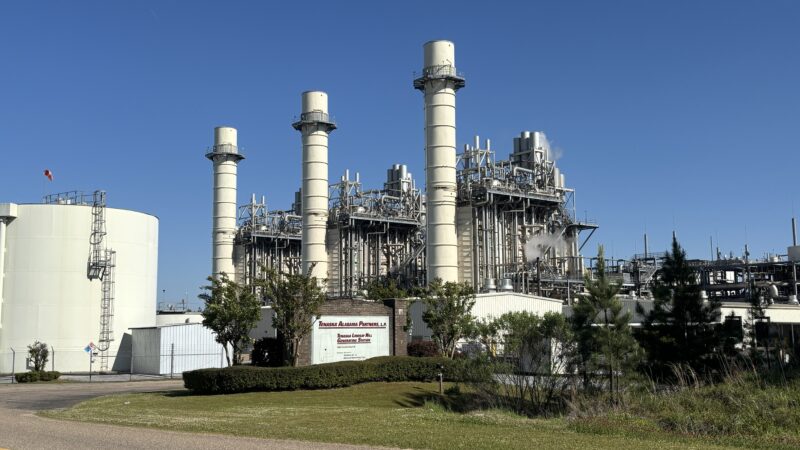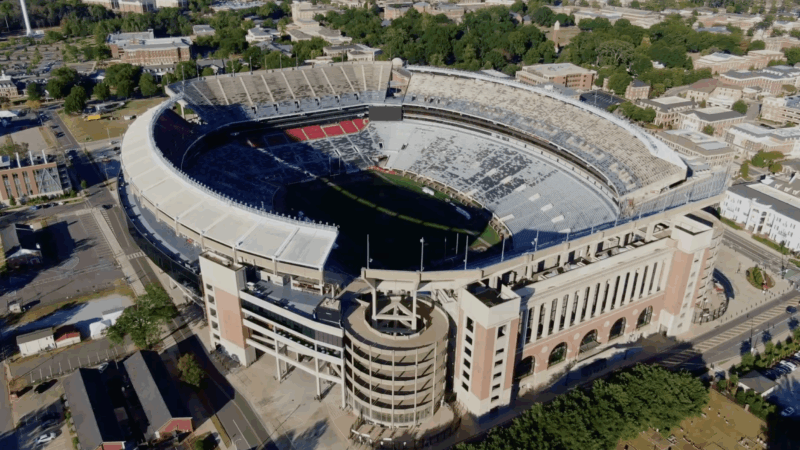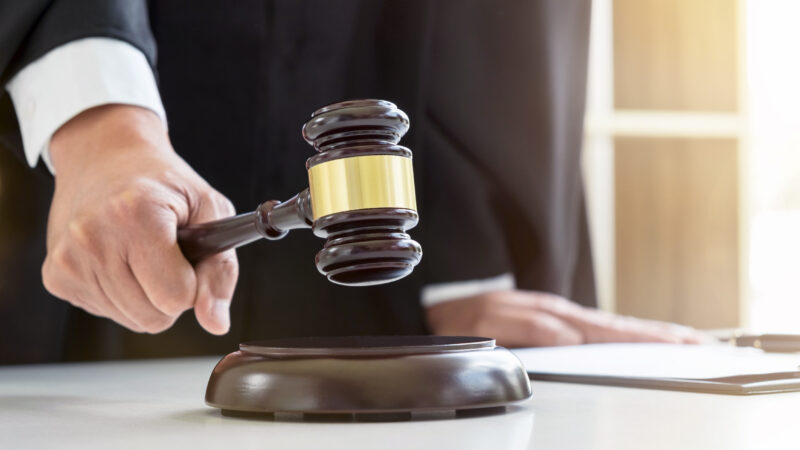An Algerian scientist splits his gaze between microbes and Mars
In a way, it all started with a road trip about a decade ago.
“My father, he had the car so I had to borrow the car from him,” says Youcef Sellam, who was interning at the University of Modena e Reggio Emilia in Italy at the time. “Yeah, let’s go together,” his dad said.
The father-son duo were headed north to a gypsum quarry near the Mediterranean coast of their home country of Algeria.
Sellam and his colleagues would go on to find microbial fossils in those minerals, a first for Algerian gypsum. And later, as a Ph.D. student at the University of Bern, he and a team of scientists would show they could use a special instrument to detect the chemical signatures of those microbes — with the idea they might one day use the technique to scan for ancient life among similar minerals on Mars.
The results were published in the journal Frontiers in Astronomy and Space Sciences.
“What this study in Algeria really does is it highlights that you can use chemical methods to infer that biology is in the mineral,” says biochemist Bonnie Baxter, who directs the Great Salt Lake Institute at Westminster University and wasn’t involved in the research. “And chemical methods are just a little more transferable to Mars.”

A hefty haul containing the tiniest of passengers
Sellam’s dad, a statistician, ignited in him a curiosity about the world.
“With the Algerian currency, it’s quite expensive,” he says, “but the first science magazine I got, it was from my father. The first biology book, it was from my father. And I was super thirsty to learn all the time.”
Sellam went on to study microbiology and paleontology. He became interested in ancient microbes and the tiny fossils they leave behind in minerals like gypsum. And then, during that internship in Italy in 2016, he was chatting with his supervisor when the stars aligned.
“He said, ‘Yeah, we know almost everything about the Mediterranean,'” recalls Sellam, “‘but there is a place that we couldn’t go and we would like to get some gypsum.'”
That place happened to be Algeria, which is how Sellam wound up driving his father’s green Toyota Echo to that quarry. Over a couple days, he used a hammer and chisel to collect more than 60 pounds of gypsum.
“I was the one making the sampling while my dad was just watching!” he chuckles.
Once Sellam got the samples to the lab, he saw sinuous filaments preserved in the mineral. These were ancient, fossilized microbes, “which is an indication that gypsum could preserve life,” says Sellam. “Because they are fossils, we cannot be 100% sure about the species.” They might have been a kind of algae or bacteria.
After that internship and earning three Master’s degrees, Sellam got a couple odd jobs. But when COVID hit, he was out of work for a few years.
“I was going through a hard time because I couldn’t prove to my father that I was doing something interesting,” says Sellam. “So it was kind of disappointment.”
But Sellam applied to universities and for scholarships — and at last, he got into the Ph.D. program in physics at the University of Bern in Switzerland. And that really impressed his dad. “He was like, ‘OK, now we are talking,'” recalls Sellam.

“Keep going”
In graduate school, he worked on an idea to help fill in the fossil record of life on Earth by looking at Mars.
That’s because it’s only possible to look back at microbial life on Earth so far. Plate tectonics and volcanic activity on our planet when it was just a baby erased the clues of its early existence.
“So basically, we lost the first billion years regarding the history of the Earth,” says Sellam, “We have a gap.” That gap includes any really ancient microbes that might have otherwise been fossilized.
Luckily, though, there’s Mars. “Mars is a screenshot of the early Earth,” Sellam says. “Basically, what Mars looks like right now is what was the Earth looking like four billion years ago. Of course, not exactly, but quite similar.”
By studying Mars, scientists might learn about the ancient Earth. And if — and it’s a big if — Mars has microbes fossilized in its gypsum, researchers will need the right tools to load onto rovers to look for that life.
Sellam’s Ph.D. focused on testing whether a small but powerful instrument called a laser ablation ionization mass spectrometer (LIMS) could detect the chemical traces of those microbes.
“It’s basically a laser beam hitting the sample,” explains Sellam. “And this laser will vaporize part of the material, creating some atoms. You will have a spectra of the different elements that are existing in the rock.”
Looking at those spectra can determine whether there’s fossilized life in the rock. But before that laser could be sent to Mars, it had to be tested on Earth, and Sellam had the perfect sample — his Algerian gypsum.
It worked beautifully. “We proved that our instrument is capable to detect signatures of life in the gypsum,” says Sellam, suggesting that one day it might help do the same on Mars.
Baxter says the study highlights the special relationship between minerals and microbes. “It seems that this kind of intimate interconnection has been present for billions of years on our planet and potentially elsewhere,” she says. “I think it’s a beautiful signature of how our biosphere and our Earth are working together to create what we see on this planet.”
Still, Baxter believes the laser approach on Mars might be tricky because it would have to detect fossils that are billions — instead of millions — of years old. “So I think that’s a big caveat,” she says. And she’s curious to know more about the biology of the microbes fossilized in the Algerian gypsum.
As for Sellam, he’s proud that his first ever scientific publication highlights his home country. But just before he finished it up, in September, his father passed away.
But, he says, “in reality, he always standing with me. Maybe he will say, ‘Don’t stop here. Keep going.'”
Auburn tabs USF’s Alex Golesh as its next coach, replacing Hugh Freeze on the Plains
The 41-year-old Golesh, who was born in Russia and moved to the United State at age 7, is signing a six-year contract that averages more than $7 million annually to replace Hugh Freeze. Freeze was fired in early November after failing to fix Auburn’s offensive issues in three seasons on the Plains.
Alabama Power seeks to delay rate hike for new gas plant amid outcry
The state’s largest utility has proposed delaying the rate increase from its purchase of a $622 million natural gas plant until 2028.
Former U.S. Sen. Doug Jones announces run for Alabama governor
Jones announced his campaign Monday afternoon, hours after filing campaign paperwork with the Secretary of State's Office. His gubernatorial bid could set up a rematch with U.S. Sen. Tommy Tuberville, the Republican who defeated Jones in 2020 and is now running for governor.
Scorching Saturdays: The rising heat threat inside football stadiums
Excessive heat and more frequent medical incidents in Southern college football stadiums could be a warning sign for universities across the country.
The Gulf States Newsroom is hiring an Audio Editor
The Gulf States Newsroom is hiring an Audio Editor to join our award-winning team covering important regional stories across Mississippi, Alabama and Louisiana.
Judge orders new Alabama Senate map after ruling found racial gerrymandering
U.S. District Judge Anna Manasco, appointed by President Donald Trump during his first term, issued the ruling Monday putting a new court-selected map in place for the 2026 and 2030 elections.









